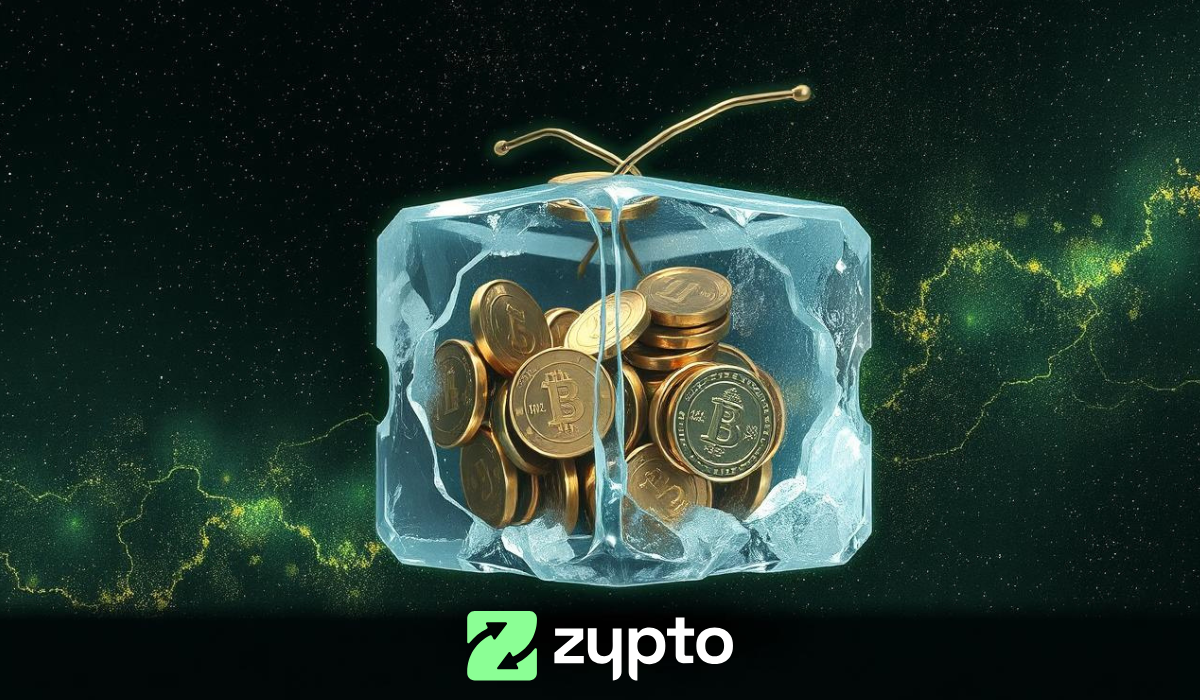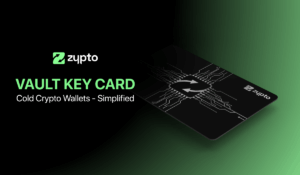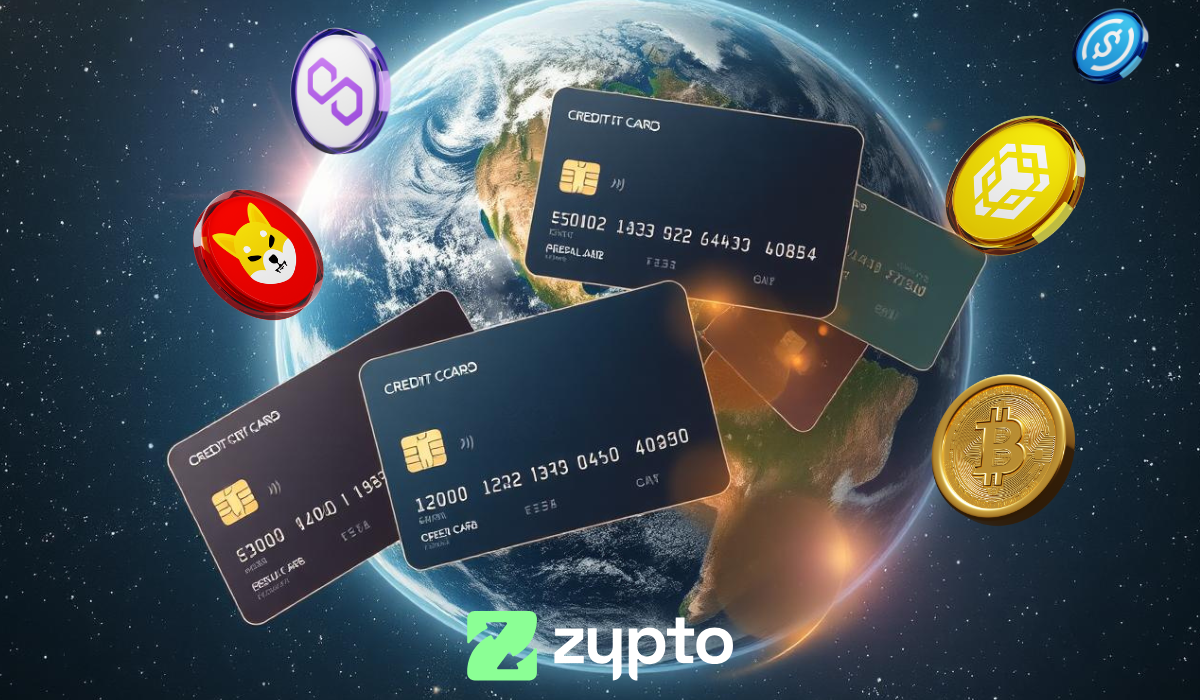You may have heard of a cold crypto wallet before. Or maybe you’ve seen cryptocurrency exchanges say they secure customers’ assets using cold storage solutions. But do you really know what cold storage in crypto entails?
Simply put, cold storage is the offline storage of cryptocurrencies. It is considered the safest form of storage due to its disconnection from the internet. As a result, various cold storage wallets are on the market. Before choosing one, let’s see how a cold storage system works.
How Does Cold Storage Work in Crypto?
As stated earlier, cold asset storage involves storing cryptocurrencies offline. The goal is to secure the assets from potential theft from malicious actors who are parading online. The storage system is more secure than hot wallet storage, which requires online access to stored digital assets.
However, it’s crucial to note that cold wallets do not store your assets directly. Instead, they safeguard your private keys and keep them offline until you execute a transaction. Your private keys are similar to your phone’s password, without which you cannot access it.
Without the private keys to your cold storage device or wallet, you or anyone else cannot access your secured crypto funds. Don’t mistake public keys for private keys, though. A public key is your wallet’s unique identifier that you can share with others to send you crypto, while a private key gives you access to the cryptocurrencies on the blockchain.
That’s why your wallet is only as safe as your private keys. You may risk your security and potentially lose your funds if anyone else has access to these keys.
Here’s a practical example of how cold storage works.

Say you have some units of Bitcoin purchased on a cryptocurrency exchange but you want to put them in cold storage yourself, you’ll need to transfer the Bitcoin to your preferred cold wallet by copying the wallet’s public key (wallet address) to the exchange platform.
If you’re using a hardware storage device, you’ll need to connect it to a computer during the process to confirm the transaction. Once the coins are transferred in, you can disconnect the device and it will store the details of your stored coins offline.
The process is similar to sending crypto from your cold storage device to another wallet. Connect the cold/hardware storage device to your computer, enter the recipient’s wallet address, and transfer the crypto you want to.
A popular example of a cold storage wallet is the Trezor Wallet, but since it supports lesser coins, traders and investors opt for strong alternatives like the Zypto Vault Key Card. It supports over 24,000 cryptocurrencies and offers mobile-first convenience.
Why Do You Need Cold Storage Solutions?
Whether you’re a crypto newbie or a savvy investor, having a cold storage crypto wallet is a good security measure to take. The good thing is that anyone can use a cold storage wallet. The best cold wallets don’t require any serious setup or configuration.
But why is cold storage important in crypto?
Improved Security
Cold storage offers a more secure storage model than hot storage. It is less vulnerable to cyber attacks and hacks because your private keys are safely stored offline. Since thieves are after your private keys, they won’t be able to get them if you have them outside online networks.
Asset Management
Managing your crypto portfolio is quite easy with a cold cryptocurrency wallet. The top options are mobile-compatible, allowing you to check your balances in real time and get an actual reflection of your portfolio with a few clicks.
Accessible Crypto Trading and Investing
Cold storage devices like your crypto wallet are typically connected to different blockchains. In some cases, you can access these blockchains and execute transactions on them directly from your wallet.
You can also connect your wallet to decentralized finance (DeFi) platforms for staking, lending, and yield farming. Investing in crypto presales is also smooth because you only need to connect your wallet and purchase the tokens for potential future gains.

Tips for Using Cold Storage Solutions
While cold wallets are inherently secure, having one doesn’t mean you should throw caution to the wind. Here are some security tips to bear in mind.
Don’t Share Your Private Keys
Though your private key is stored offline and is out of sight for cybercriminals, sharing your private key or not safeguarding it properly can put you at risk. A third party who has access to it can be careless or even steal your funds. Never share it with anyone.
Backup Your Keys Manually
These days, virtually everyone stores important details online. While this offers accessibility, it’s potentially risky because you may lose your device or have your online storage tool compromised.
A better approach is to go manual and write down your private keys or seed phrases in a journal or book. Also, safeguard the book properly so it doesn’t land in the wrong hands.
Don’t Lose Your Keys
Without your private keys, you can’t access your coins because there’s no other way to sign in to your wallet. Whatever you do, ensure you don’t lose your keys. Doing so may lead to a complete loss of funds.
Final Thoughts
Cold storage crypto solutions provide the most secure way of storing assets. They keep private keys offline, making them nearly impossible to breach by hackers. However, you must remain security conscious to avoid loss of funds.
The Zypto Vault Key Card
Many cold crypto wallets are out there, but not many have the convenience that the Zypto Vault Key Card offers. With support for over 24,000 cryptocurrencies and featuring NFC technology and 3FA including advanced biometrics, you don’t need a physical cold storage device nor any cables.
Perfect for mobile-first lifestyles and travel, assets are kept completely offline until the Vault Key Card is tapped to the connected mobile device to authorize a transaction. Visit the Zypto website to learn more.
Cold storage or hot storage, which one does it for you? Share your opinions in the comment section below.

FAQs
What is the Zypto Vault Key Card?
The Zypto Vault Key Card turns the Zypto App into a cold storage crypto wallet and simplifies cold storage for users. It supports 24,000 digital assets and offers top-notch security. The wallet is also mobile-compatible, eliminating the need to carry a physical hardware wallet around.
How can I move crypto out of cold storage?
Transferring crypto out of cold storage is pretty straightforward. Once you need your coins, connect your wallet to the internet, enter the receiving wallet address, and send crypto.
With the Zypto Vault Key card and its 3 factor authentication, you can simply tap the card to your Zypto App wallet to take your wallet online for a transaction.
When is a good time to move crypto to cold storage?
Once you’re done trading or have no immediate use for your cryptocurrencies, you can send them to a secure non-custodial wallet such as Zypto App alongside its Vault Key Card, for additional security.






























0 Comments